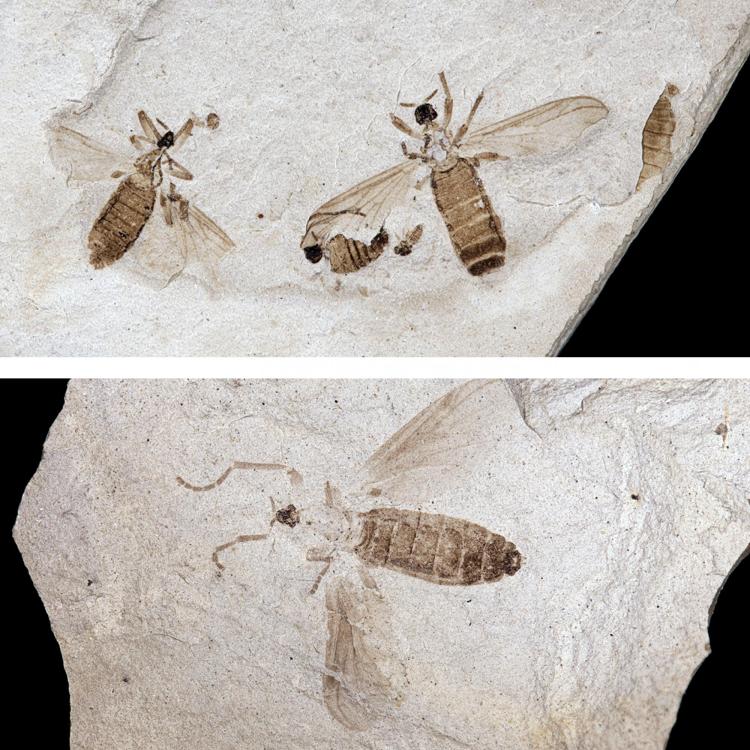The CU Museum is closed we will be opening early in the spring semester.
During this time, collection visits will be available by appointment and other special access requests will be considered on a case-by-case basis.
Please email cumuseum@colorado.edu for more information.
March Flies
Today’s Wow Bibionids (March Flies) take us back to the Eocene, 56 to 34 million years ago. Fossilized Bibionids like these are very common in fossil insect deposits from Florissant and the Green River Formation in Colorado. They are often found together in groups of multiple specimens in Green River deposits (sometimes more than 20 together). These specimens were collected in the early 2000s from the Green River Formation by Mr. David Kohls. Green River Formation outcrops can be found at the intersection of Colorado, Wyoming and Utah. It is formed of sediments from an ancient group of intermountain lakes. A very cool feature is that seasonal sediment varied in color, so layers from single years can be studied!

Today’s Bibionids are known to swarm in clusters during the spring and the adults of the species are herbivores and pollinators. Some species are known as “love bugs” for their conspicuous copula behavior (staying attached for long periods, even in flight), some species do not eat (too busy mating?), instead surviving on food ingested during their larval stage.
In the early 1900s, CU Curator TDA Cockerell collected and described some of the first known bibionids from Florissant (Florissant and Green River Formation are two of the best sites in the world for Eocene fossils—both right here in Colorado). You can download one of these publications, from 1909, for free from the Biodiversity Heritage Library if you would like to see what a scientific species description looks like from that era. They were much shorter and contained few, if any photographs, but sometimes a line drawing was included. Today we are able to include much more lengthy descriptions of morphology and lots of high-resolution digital images that clearly show the identifying morphology. This technology along with the incredible preservation of some Green River Formation insect fossils, allows identification to family and subfamily and sometimes show color patterns, wing venation, and sex-related characteristics.

